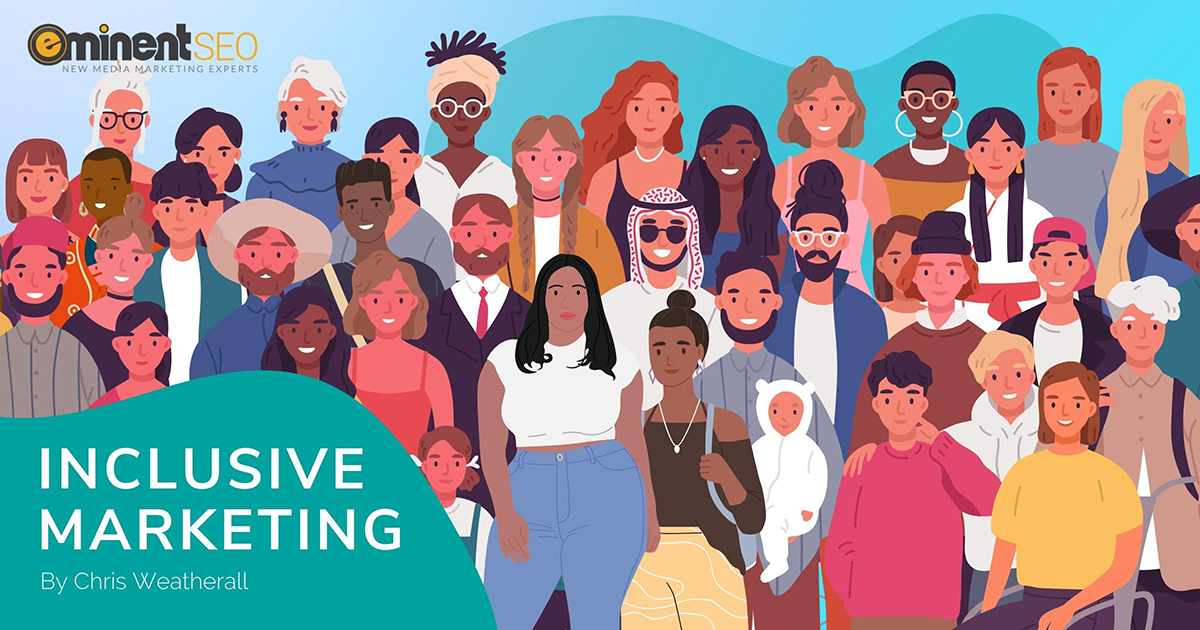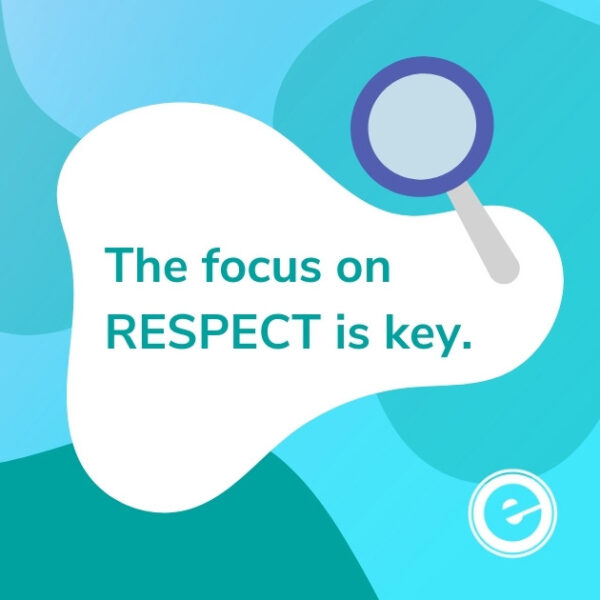
Our world is more connected and diverse than ever. Though there is still a long way to go in many areas, it is important to celebrate the fact that people of various cultures, races, religions, genders, and sexualities are accepted and celebrated for who they are. This is a significant step forward and a happy part of modern life.
One of the very basic rules of marketing is to know your audience. While demographics have always been a part of the marketing equation, it is important to assess whether you are truly including everyone in your target audience. If you aren’t aiming to connect with a diverse group of people, your company is not living up to its full potential. Brands thrive on inclusivity and a diverse audience base.
It can be difficult to assess whether you are hitting the mark when it comes to diverse marketing, as marketing education does not always cover this topic. Thankfully, with a few tips and a bit of help, you can be sure your brand and your business are living up to their full potential in terms of diversity and inclusion.
What Is Diversity?
Before delving into the wide world of diversity in advertising, it is important to understand what diversity actually is. Though many people have a vague idea of what diversity looks like, it’s easy to proceed through life without a concrete definition. This clarification can help you to identify areas where your business’s marketing may be lacking in inclusion.
According to Global Diversity Practice, diversity is the unique traits and characteristics that make everyone different. Inclusion is about appreciating and celebrating these differences and empowering everyone to be proud of their unique traits. Diversity and inclusion are built on a foundation of respect and support, where no singular group or trait is seen as better or worse than any other.
The focus on respect is key. Inclusion does not mean trying to mimic or copy a certain group of people. Instead, it means accepting and celebrating that all people are different, and this is what makes our modern society very special.
Diversity in Marketing
There are many different ways that diversity can appear in marketing campaigns. Though you do not have to use all of these options in every one of your ads, it is important to understand the different ways that you may connect with different groups.
Visuals
You can include diversity visually in your marketing efforts if that is appealing to you. For example, many commercials and ads make an effort to use racial or ethnic diversity by hiring actors or models of various races for their advertisements. Something as simple as portraying a biracial couple can be significant in your quest for increased diversity. Though this certainly isn’t all you should do, it can help to ensure that people of all races are seen in common, public advertising spaces.
Colors and patterns may work to your advantage as well. Sometimes, patterns or color schemes are associated with certain groups or cultures. If you can use these colors or patterns appropriately in your ads, it may be a good way to attract individuals of a certain demographic. For example, including a rainbow-themed ad may indicate that your company is an ally to the LGBTQ+ community and interested in connecting with its members.
Vocabulary
You can reach a broader and more diverse audience when you include vernacular and language that is specific to a certain group. Using a group’s vocabulary properly and respectfully can help you to get your message across in a more effective way. It is important to be careful, though.
As with all multicultural marketing efforts, it is crucial to make sure you do not sound like you are mocking or mimicking the group you are trying to connect with. However, small vocabulary changes may make your ads more inclusive. This is especially true regionally. For example, using “y’all” in the South may be more appropriate if you are trying to increase your appeal in Southern markets.
Messaging
The messages of your ads themselves also matter when it comes to marketing to diverse groups. The impact of a message in one group may not be the same as its impact in another. You must tailor your message to your target audience if you want to find success in diversity marketing. Research the implications of your message and ideas in your target audience. Be sure you are sending the message you intend, rather than inadvertently offending or excluding the group you’re trying to market to.
Cultural Appropriation
Though the term “cultural appropriation” has become somewhat of a buzzword, it is important to understand, especially as a marketer. It is incredibly easy to move from the intention of respect into the action of appropriation without meaning to do so. When you do this as a business, you risk permanent damage to your brand. More importantly, you engage in a pattern of disrespect that will ultimately harm the people you are aiming to connect with. Fortunately, with a little understanding, you can avoid cultural appropriation as you market to diverse audiences.
Cultural appropriation occurs when members of a majority use aspects of a minority group’s culture in a stereotypical, disrespectful, or uninformed way. For example, when people dress up as Indigenous cultures for Halloween, they are using aspects of Indigenous culture for their own frivolity and fun. Many aspects of Indigenous cultures that are used in these costumes are reserved for ceremonies and special events. Not only are those who dress up this way uninformed about the origin and history of the culture they are using, but they are creating an environment that mimics or mocks rituals that are sacred to another culture.
Avoiding Cultural Appropriation as a Marketer
As a marketer, it is important to be informed about all audiences that you plan to market to. When you do your research and educate yourself properly on the cultures you are trying to connect with, it is difficult to pass into an area of disrespect when you market. If you fail to educate yourself properly, it is incredibly easy to appropriate other cultures and cause more harm than good.
The best way to avoid cultural appropriation is to include people who are within the demographic you are aiming to attract. For example, if you are looking to market to members of the LGBTQ+ community, have members of the LGBTQ+ community working with you every step of the way. Use focus groups and panels to ensure the proper message is getting across. If someone mentions that an aspect of your marketing scheme may be inappropriate, heed their advice and take it seriously. The best you can do if you are not within a culture is to include and listen to those who are.
Follow Through
One of the most important aspects of diverse marketing is showing your receipts, so to speak. The modern consumer is not fooled by a single BIPOC person in an advertisement or a rainbow flag.
Consumers now fact-check companies when they make claims about social justice, especially if the claim is ultimately making money for the business.
Take the racial injustice reckoning that occurred in the wake of George Floyd’s murder. In the days and weeks after the Minneapolis police took George Floyd’s life, many companies made posts or ads about their support for the Black community.
However, many of these same companies gave money to politicians who enacted pro-police and anti-Black legislation. Employees of other organizations came out to say that, while the company tweeted about their support for the Black Lives Matter movement, they felt discriminated against in a very real way daily.
The lesson from this is to refrain from making ads that ultimately do not fit with your company’s actions and mission. If the company has a history of sexual harassment or sexism lawsuits, don’t create ads that claim to empower women. Consumers will always fact-check your claims, and if you are putting a diverse ad forward without the action to back it up, chances are you will be called out.
Token Representatives
A significant indicator of cultural appropriation and minimal follow-through is the concept of a token representative. This often happens when a business suddenly realizes that they can make a profit or improve their reputation from increased diversity. To “solve” their issue, these companies will hire a single member of a minority group, such as a person of color or a woman, to put forward as proof of their inclusivity. This is superficial, and it is almost always called out by consumers on social media.
The same goes for advertising. Using a token representative of a culture in your ad is a shallow effort to create diversity. You must make sure your message is accurate, rooted in respect, well-researched, and well-executed. In other words, your ad must have the follow-through to be truly diverse. Bringing one person in a hijab forward as your only effort to show your inclusivity, for example, is offensive and ineffective.
Why Is Diversity in Marketing Important?
There are two major ways that diversity in marketing is important for a business. Understanding these concepts can help to inspire you to take action on a diverse marketing campaign. Though diversity and inclusion involve time, effort, and sacrifice, it is important to make the necessary changes. Ultimately, diverse marketing does have significant benefits.
Financial Benefits
Financially speaking, marketing to diverse audiences is a fairly obvious move. Of course, you are going to benefit financially if you increase your pool of consumers. If you market to a larger group, more people are likely to buy your product. The more people who buy your product, the more profit you will see as a company. It’s a fairly straightforward equation, and it can benefit your company greatly.
There are millions of people of different races, genders, sexual orientations, abilities, and religions who have disposable income to spend with your company. Avoiding diverse marketing means that you are closing off significant revenue streams. It simply doesn’t make good business sense to keep your marketing exclusive to certain groups.
Ethics
Ultimately, you should market to diverse groups of people because it is the right thing to do. There is no single culture, race, religion, or gender that is more deserving of options than others. Everyone deserves to see themselves in the media and feel included in exciting new products and services that may arise. In this day and age, there is absolutely no reason for anyone to be excluded.
Diverse marketing shows that your company acknowledges and respects the individual traits that make us all unique. When you put in the time and effort to create a truly diverse advertising or marketing campaign, you indicate that you are committed to a fair global community that respects and honors differences rather than profits from exclusion. This is the way the world is moving, so it is best to get on board.
Examples of Diverse Marketing
It can be difficult to envision what diverse marketing looks like with all of these stipulations. Though not every diverse ad is perfectly executed, there are some great examples of diverse ads throughout history that were effective for their time.
Examples include:
There are many other wonderful examples of inclusiveness as marketing has evolved. Though they may not always seem obvious to the general public, individuals in the targeted demographic commonly notice and appreciate the inclusion and perspective.
Promote Diversity in Advertising
If you are ready to create more diverse and inclusive marketing campaigns, you don’t have to do it alone. An experienced online marketing service can help you to create appropriate, thorough, and powerful advertisements that include people of many different races, genders, abilities, ages, sexualities, religions, and backgrounds.
Sources
- Rivera, R. G., Arrese, A., Sádaba, C., & Casado, L. (2020). Incorporating Diversity in Marketing Education: A Framework for Including All People in the Teaching and Learning Process. Journal of Marketing Education, 42(1), 37–47. https://doi.org/10.1177/0273475319878823
- Olzmann J. A. (2020). Diversity through equity and inclusion: The responsibility belongs to all of us. Molecular Biology of the Cell, 31(25), 2757–2760. https://doi.org/10.1091/mbc.E20-09-0575
- Olivia, F., & Ida, J. (2021, May 24). Affecting the consumer by reflecting the consumer? DiVA Portal. Retrieved June 1, 2022, from https://www.diva-portal.org/smash/get/diva2:1561532/FULLTEXT01.pdf
- Patrick, H. A., & Kumar, V. R. (2012). Managing Workplace Diversity: Issues and Challenges. SAGE Open. https://doi.org/10.1177/2158244012444615
- Llamas, N. E., & Marinaro, J. Á. (2020). The Art of Influencing Consumer Choices: A Reflection on Recent Advances in Decision Neuroscience. Frontiers in Psychology, 10. https://doi.org/10.3389/fpsyg.2019.03009








